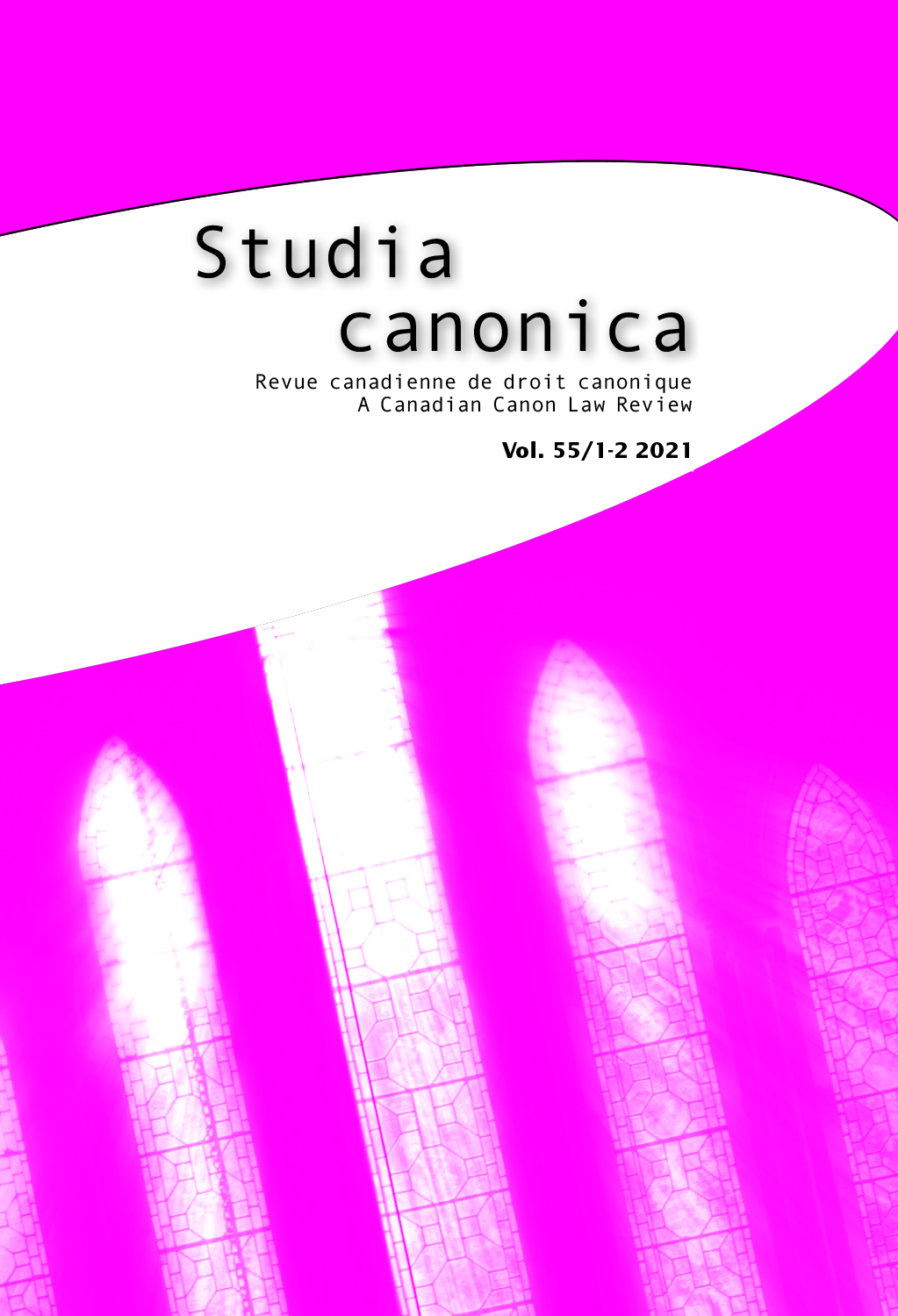 previous article in this issue previous article in this issue | next article in this issue  |

Preview first page |
Document Details : Title: Instituted Ministers and Ordained Ministers Subtitle: Reflections on Ministry and Potestas in the Horizon of Pluri-Ministeriality Author(s): NOCETI, Serena Journal: Studia Canonica Volume: 58 Issue: 1 Date: 2024 Pages: 247-276 DOI: 10.2143/STC.58.1.3293405 Abstract : This article addresses the question of the munera and potestas/power of the ministerial figures in a synodal Church. An interpretative proposal is developed starting from the vision of pluri-ministeriality and the constitutive synergy between ministers, understood based on Vatican II’s theology of ministry and the novelty constituted by instituted ministries exercised by lay people. The choice made at the Council to take the organisational model of the Church of the first four centuries (Ignatius of Antioch) as the ideal reference for intra-ecclesial relations, and the 1972 publication of the motu proprio Ministeria quaedam by Paul VI, allow the bipolarity between potestas ordinis and iurisdictionis and the hierarchising perspectives typical of the cursus honorum to be overcome, and delineate the specific identity of each ministerial figure starting from the liturgical rite of constitution (sacrament or sacramental), from the declination of the tria munera and from their place in the ecclesial body. Synthetically, ordained ministers work ad aedificationem Ecclesiae, in safeguarding the apostolicity of the faith, while instituted ministers work in aedificatione Ecclesiae, contributing with their ordinary faculties to the realisation of ecclesial dynamics in the field of pastoral life proper to them. Cet article aborde la question du munera et du potestas/pouvoir des différentes figures ministérielles dans une Église synodale. Une proposition interprétative est développée à partir de la vision de la pluri-ministérialité et de la synergie constitutive entre les ministres (ordonnés ou non), qui peut être comprise sur la base de la théologie du ministère de Vatican II et de la nouveauté que constituent les ministères institués, des hommes et des femmes laïques. Le choix fait au Concile de prendre le modèle d’organisation de l’Église des quatre premiers siècles (Ignace d’Antioche) comme référence idéale pour les relations intra-ecclésiales, et la publication du motu proprio Ministeria quaedam de Paul VI (1972) permettent de dépasser à la racine la bipolarité entre potestas ordinis et iurisdictionis, et les perspectives hiérarchisantes typiques du cursus honorum, et délimitent l’identité spécifique de chaque figure ministérielle à partir du rite liturgique de constitution (sacramentel ou sacramentel), de la déclinaison de la tria munera et de leur place dans le corps ecclésial. Synthétiquement, les ministres ordonnés travaillent ad aedificationem Ecclesiae, en sauvegardant l’apostolicité de la foi; les ministres institués travaillent in aedificatione Ecclesiae, en contribuant avec leurs facultés ordinaires à la réalisation de la dynamique ecclésial dans le domaine de la vie pastorale qui leur est propre. |
|


